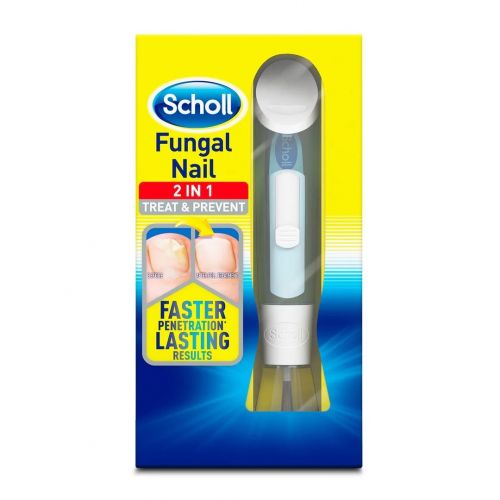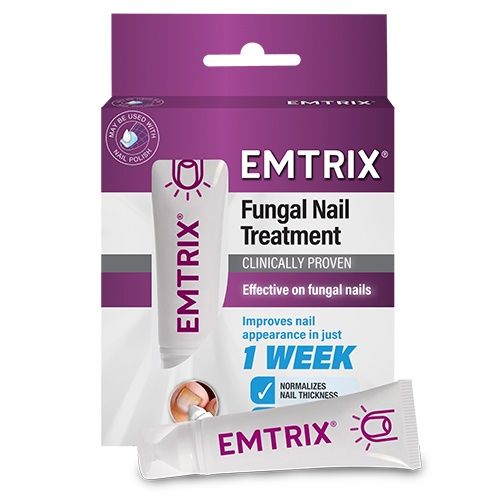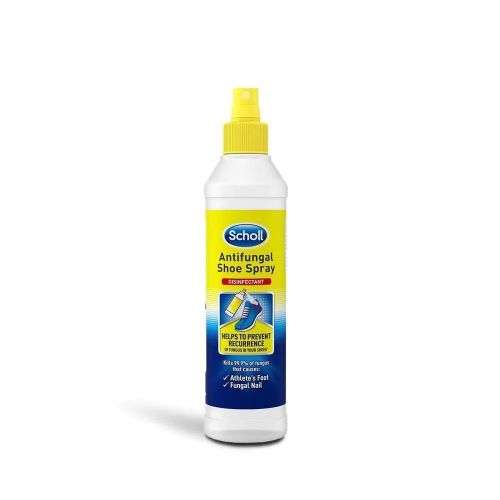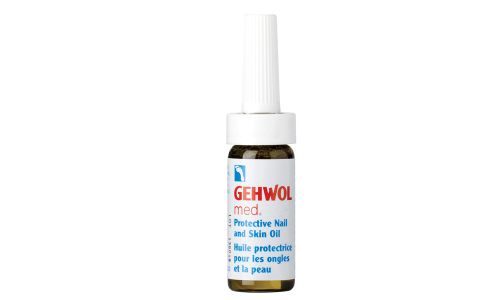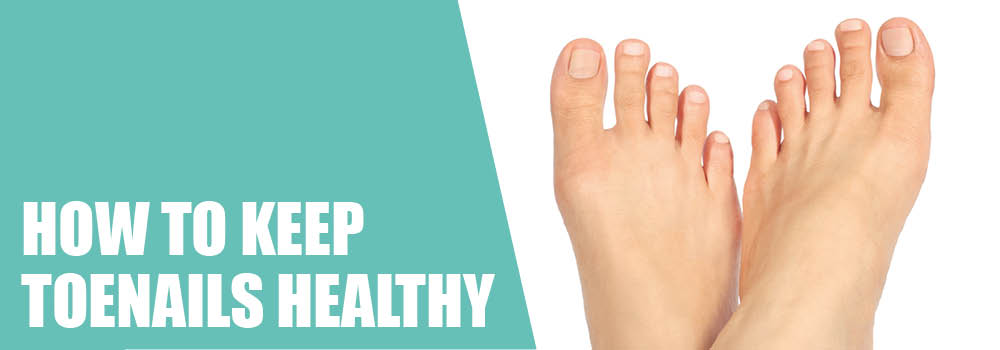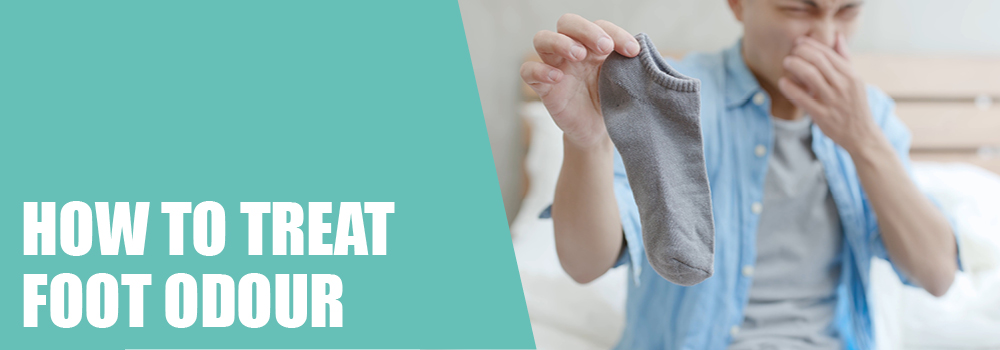Fungal Nail Infection: What It Is & The Best Treatment Options
- Mrs G
- Simply Feet
- 28 Feb 2023

We have got you covered with our helpful guide to give you an insight into what a fungal nail infection is, the causes and symptoms, how you can prevent catching it, and the best treatment options available.
Continue reading to learn everything you need about fungal nail infections.
What is a Fungal Nail Infection?
A fungal nail infection, also known as onychomycosis, is a common nail infection which can leave you with brittle, discoloured nails. Fungal infections are very similar to athlete's foot, but instead of affecting the skin on your feet and between your toes, it invades your nails.
What Causes Nail Fungus?
Naturally, fungus can be found on the human body, this is nothing to be concerned about as it typically lives harmlessly on your skin. However, it can begin to overpopulate, resulting in a nail fungus infection.
Fungus is most commonly found on toenails because feet are the perfect environment for it to thrive due to the warm, dark and moist conditions your feet are typically in. You are more prone to catching a toenail fungal infection by:
- Walking around barefoot frequently in hot, humid places such as swimming baths, communal showers and locker rooms
- Already having athlete’s foot as this increases the risk of spreading the infection to your nails
- Having a weakened immune system
- Not keeping your feet and in between your toes clean and dry
- Having damaged nails
- Wearing shoes that cause your feet to get hot and sweaty
- Not wearing clean, breathable socks
- Having certain health conditions such as diabetes, psoriasis or peripheral arterial disease
Symptoms of Nail Fungus
A fungal nail infection can affect part of the nail, the whole nail, or several nails. In the early stages of the infection, you may see no symptoms. However, as the condition progresses, you may start to see some of these symptoms:
- Thickened nail
- Brittle and crumbly nails
- Pain or discomfort
- White spots appear on the surface of the nail
- Discolouration of the nail – it may turn white, black, yellow, or green
- The nail separates from the nail bed
- Unpleasant smell
You may also notice that the skin near the affected nail may show some symptoms, such as becoming:
- Infected
- Itchy
- Swollen
- Red
- Cracked
How to Prevent Fungal Nail Infection
Fungal nail infection is very common and something everybody wants to avoid, so here are some simple steps you can follow to prevent you from catching it:
- Always wear clean cotton socks that allow your feet to breathe
- Don’t share towels or socks with other people
- Wear different shoes if you can, so this gives them time to air out before wearing them again
- Wash your towels, socks, clothes and bed linen regularly to remove any fungi
- Keep your hands and feet clean and dry
- If you have athlete’s foot, ensure to treat it as soon as possible to avoid spreading the infection to your nails
- Ensure you use trustworthy salons if you get a manicure or pedicure, so you know their equipment is clean
- Keeping your nails short can prevent fungi and other germs from getting under your nails
- Don’t share nail clippers or scissors with other people
- Avoid walking barefoot in public pools, showers and locker rooms where possible
- Spray an antifungal shoe spray in your shoes to prevent the spread and reoccurrence of fungal infections
Best Fungal Nail Treatments
Treating a fungus nail infection as soon as possible is essential because leaving the infection untreated for too long can lead to your nail becoming separated from your nail bed. In more severe cases, it could cause pain when wearing shoes or walking.
Continue reading to find out the best fungal nail treatments we recommend for clearing up a mild fungal infection.
Scholl Fungal Nail Treatment
One of our favourite treatments is the Scholl Fungal Nail Treatment; it is convenient, discreet, and easy to apply. This product has two ways to treat the infection, including a nail file and an advanced nail liquid.
The nail file removes the surface of the infected nail, reducing the thickness of the nail, improving its appearance and enabling the treatment to penetrate more deeply into the nail or the nail bed.
The treatment liquid works by softening the nail, creating an acidic environment so the fungus cannot grow and creating a barrier to reduce the spread of infection. This treatment works very well with an antifungal shoe spray, such as the Scholl Antifungal Shoe Spray, as it reduces the risk of recurrence.
The Emtrix Fungal Nail Treatment is an effective and clinically proven treatment that improves the appearance of discoloured and deformed nails. Emtrix has a physical keratolytic effect and degrades the cells of fungi that typically cause fungal nail infections. This treatment also increases hydration, changes the nail’s microenvironment and improves the nail surface integrity.
Best Preventive Treatment
Our best preventive treatment option is the Scholl Antifungal Shoe Spray, as it is easy to use and works instantly to kill 99% of the fungus that causes athlete's foot and nail fungus. We recommend that this product be used daily alongside your treatment to prevent the fungal infection from recurring.
Best Treatment For Damaged Nails
A fungal nail infection can cause damage to your nails, leaving them brittle and crumbly. The Gehwol Med Protective Nail & Skin Oil regains fragile and brittle nails' elasticity and beauty and prevents fungal infections!
Is Nail Fungus Contagious?
A nail fungus infection is very contagious, so it is crucial to follow the correct steps to prevent it from spreading to anybody else. Here are some steps you can take to prevent it from spreading:
- Don’t share or re-use towels - as fungus is highly contagious, and it will cling to fabric, so it is best to use a new towel every time you shower and to wash after every use
- Don’t share clothes or footwear - fungus can live in damp clothing, especially in shoes and socks, as this is the perfect environment for it
- Wash your hands regularly, especially if you touch the infected nail
- Keep your nails short but always disinfect the scissors and cutters before cutting each nail to ensure you don’t spread the infection onto any other nails
- Disinfect the shower after every use and if possible, try to wear sliders, flip-flops or shower shoes as an extra precaution
- Don’t share nail, foot care products and tools
- Wear clean, breathable socks to bed and wash your sheets regularly to minimise the risk of spreading to anybody who shares a bed with you
Can You Paint Your Toenails With A Fungus Infection?
It is recommended that you don’t wear non-medicated nail polish when you have a nail fungus infection because the polish prevents moisture in the nail bed from evaporating. This makes the perfect environment for fungus to grow as it is a moist, warm, and dark environment.
Can You File Away Toenail Fungus?
The surface of the infected nail can be filed down with a nail file, as this helps the anti-fungus treatment penetrate more deeply into the nail or the nail bed.
How To File Toenails with Fungus
As previously mentioned, filing your nails down comes with benefits. However, you must file them correctly to ensure you don’t cause any damage to your nails or spread the infection to any other nails. Here are some steps on how to file toenails with fungus properly:
1. Soak Your Nails to Soften Them <H4>
Before filing and cutting your toenails, you need to soften your nails by soaking them. This is because your nails tend to be thicker when you have a fungal infection, making it harder for you to file and cut them.
To soften your toenails, soak them in a bowl of warm water for at least 10 minutes, or take a shower. If you find after 10 minutes, your nails are still very hard, soak them for longer until they are softened.
2. File The Surface of Your Nail
When your nail has a fungus infection, you may notice white spots on your nail, which will need filing off. The best way to file the nail's surface is to move in small movements in the same direction, as this will help shave as much of the infected nail as possible. However, you will not completely remove all of the infection, so you will still need an antifungal treatment.
Nail fungus is highly contagious, so you must ensure that you don't infect your other nails by using the same tool or touching your other nails without washing your hands. In addition, it is essential to disinfect your tools after every use to stop the spread of the fungus.
3. Cut Your Nails
A nail nipper is a great tool to use when cutting your nails, making it much easier to cut through thicker nails than standard clippers. The best way to cut your nails is to start from the outer corners and make small horizontal cuts. We recommend not to round your nails off because this increases your chance of an ingrown toenail.
4. Smooth The Edges With a File
You need to ensure that your nail has no sharp edges, as this is likely to get caught on something, resulting in breakage. The best way to file your nail's edges is to file in the same direction, as this is less likely to weaken your nail.
Simply Feet Are Here To Help
At Simply Feet, we recommend consulting your local podiatrist before treating at home, especially if you have a serious or persistent case of nail fungus or any medical conditions.
We have everything you need to treat a mild fungus nail infection, so start treating your nail fungus today with our antifungal products. We also have a huge range of nail care products to keep your nails in excellent condition. If you require assistance or guidance, contact us here, and a staff member will be in touch with you as soon as possible!

